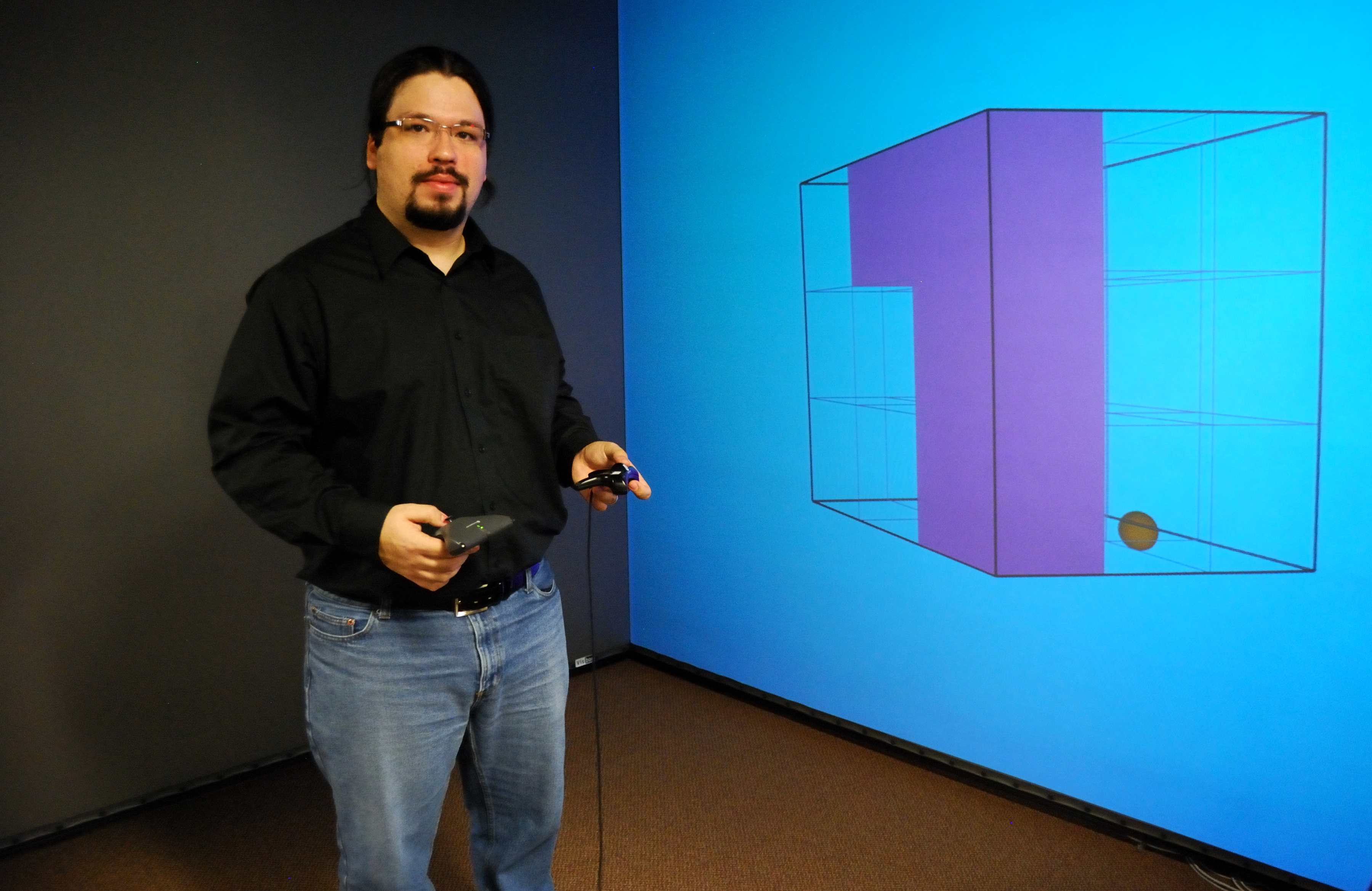Virginia Tech computer science students win grand prize at second annual 3D UI competition

A group of doctoral students in the Virginia Tech College of Engineering’s computer science department and Center for Human-Computer Interaction recently won first place in the 3D UI Grand Prize competition at the 2011 Institute of Electrical and Electronics Engineers Symposium on 3-D user interfaces.
It is the second consecutive first-place win for the team known as the Fighting Gobblers, advised by associate professor Doug Bowman. The team won the competition via a video they prepared for the contest, held in Singapore. Team members included Felipe Bacim of Porto Alegre, Brazil; Bireswar Laha of Konnagar, India; and Cheryl Stinson of Ottawa, Canada.
The competition required teams to develop a 3-D user interface for a difficult virtual interaction task, in this case solving a cube-shaped 3-D puzzle in a virtual environment. The 2010 version of the Gobblers, consisting of several different students also advised by Bowman, won the inaugural contest for creating a program that allowed a user to “shop” in a 3-D virtual supermarket.
In this year’s competition, all of the other teams created systems that allow a user to virtually lift a puzzle piece from a collection of pieces and place it within the larger puzzle. However, the Virginia Tech team developed a novel solution called “Building Blocks” that allows the user to build the pieces directly inside the puzzle with a series of clicks from a handheld 3-D pointing device. As the user builds, the potentially matching pieces in a sidebar menu become highlighted. Once a piece is created that matches one of the puzzle pieces, the user can confirm the piece, causing it to become a part of the final solution. An additional 3-D device held in the other hand can rotate the entire puzzle for easier access and viewing.
“The Building Blocks technique offers three major advantages over direct manipulation techniques,” the team wrote in their presentation paper for the competition. “First, the technique eliminates the need to provide manipulation of the individual puzzle pieces. No rotation is required since the user can directly build the piece in the desired orientation.” Additionally, the user can focus on the puzzle space since piece selection is automatic, and the user can delay committing to a specific piece by starting to build in the empty slots in the puzzle.
Members of Bowman’s 3D Interaction Group also won the Best Paper award at the symposium. The paper, titled "Rapid and Accurate 3D Selection by Progressive Refinement," was authored by computer science doctoral student Regis Kopper, also of Porto Alegre, Brazil; Bacim and Bowman. It describes a novel technique for difficult selection tasks in 3-D environments, and was inspired by work on the supermarket challenge in the 2010 3D User Interfaces contest.
“Rather than requiring a single, precise selection by pointing at the object, our technique uses a series of rapid, low-precision refinement steps to gradually reduce the set of selectable objects until the desired object is the only one left,” Bowman said. “We describe an experiment that demonstrates the benefits of this technique for both speed and accuracy as compared to a traditional 3-D pointing technique.”
This technique could be used to enhance users’ efficiency and reduce errors in cluttered virtual environments, such as visualizations of scientific data, said Bowman.




.jpg.transform/m-medium/image.jpg)